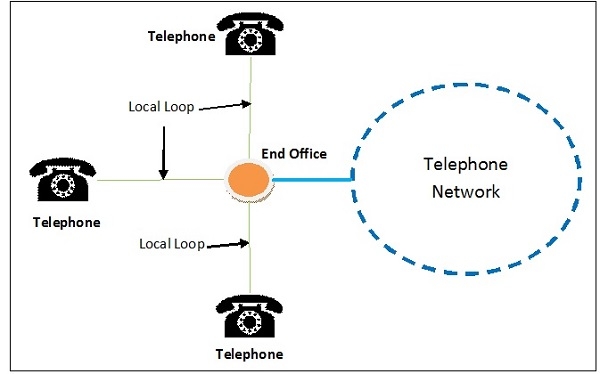
 Data Structure
Data Structure Networking
Networking RDBMS
RDBMS Operating System
Operating System Java
Java MS Excel
MS Excel iOS
iOS HTML
HTML CSS
CSS Android
Android Python
Python C Programming
C Programming C++
C++ C#
C# MongoDB
MongoDB MySQL
MySQL Javascript
Javascript PHP
PHP
- Selected Reading
- UPSC IAS Exams Notes
- Developer's Best Practices
- Questions and Answers
- Effective Resume Writing
- HR Interview Questions
- Computer Glossary
- Who is Who
The Local Loop
In a telephone system, the local loop is a two-wire connection between the subscriber’s house and the end office of the telephone company. It is commonly referred to as the “last mile” of the telephone network. The loop may run from 1km to as far as 10 km.

Composition
Traditionally, local loops are composed of twisted pair copper cables. The old local loops have several limitations − narrow bandwidth, high attenuation, distortion of symbols, crosstalk's etc.
In recent times, copper wires are being replaced by fiber optic cables for faster and more accurate performance. Installation of fiber cables is popularly known as FttH (Fibre to the Home).
Data Transmission
Telephone networks are widely used for data transmission along with voice, calling for connecting computers as end users, along with telephones. The digital data of the computers need to be converted to analog signals in the telephone lines. So, telephone modems are used. Another method is to use digital loops, popularly called digital subscriber lines.

